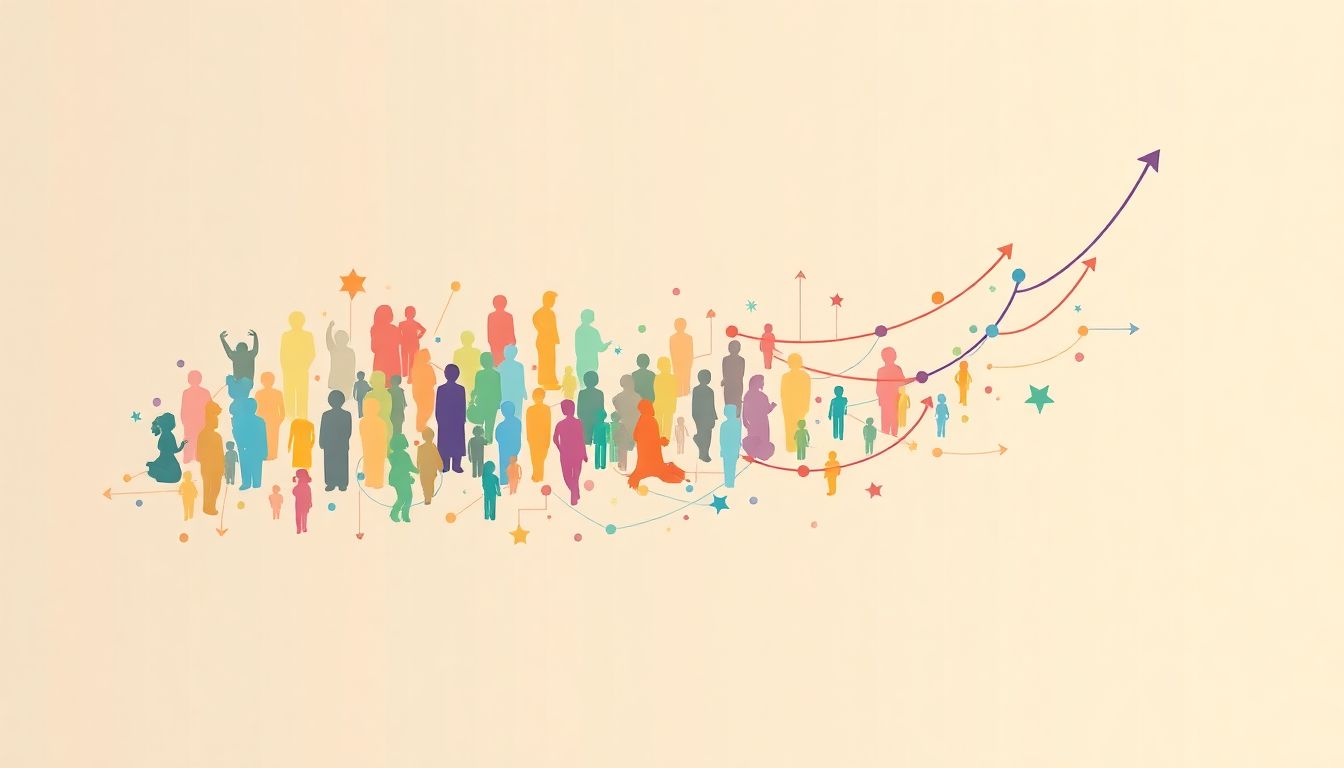We all know that AI, including ChatGPT, can sometimes have its quirks. You might have noticed that certain responses can reflect biases, which can be a bit unsettling. It’s important that we recognize these biases, as they affect the quality of information we receive and rely on daily.
But don’t worry! If you stick around, I’ll share valuable insights on how to identify and address these biases. Together, we’ll explore effective methods and tools that help mitigate them, ensuring a more accurate and fair interaction with AI.
From common biases to real-world examples, we’ll cover practical strategies that empower you to use ChatGPT more thoughtfully. So, let’s dive in and demystify this whole bias thing—your AI experience is about to get a whole lot better!
Key Takeaways
- Recognize biases in ChatGPT outputs to ensure better information quality.
- Identify bias by analyzing language and checking for diverse perspectives in responses.
- Common biases include algorithmic, representation, selection, cultural, and confirmation bias.
- Reduce bias by using diverse datasets, ethical guidelines, and open-ended prompts.
- Use tools like IBM’s Fairness 360 to analyze bias in AI outputs effectively.
- Be specific in your prompts and always question or seek balanced perspectives.
- Provide feedback on biased outputs to help improve AI models.
- Stay updated on ongoing AI bias research to understand and address these issues.

How to Identify Bias in ChatGPT Outputs
Identifying bias in ChatGPT outputs involves a systematic approach to recognizing skewed language or perspectives.
Start by evaluating the responses for any language that may seem biased or discriminatory, which can be a clear indicator of underlying bias.
One straightforward method is to ask ChatGPT about a sensitive topic and analyze the language used in the replies.
For example, prompt ChatGPT with: “Explain the importance of diversity in the workplace and provide examples.” Look for any lack of diverse perspectives in the response.
Another effective approach is to contrast various responses to similar questions. Use prompts like: “Discuss the impact of social media on different age groups.” This can help reveal any disparities in how subjects are portrayed.
Using specific bias detection methodologies, such as the “Woke Index” or “Stereotype Test”, can also guide you.
Finally, keep an eye out for confirmation bias—responses that unnecessarily support a specific viewpoint without exploring alternative perspectives.
Common Types of Bias Found in ChatGPT
Bias in ChatGPT can manifest in various forms, making it crucial to recognize the most common types.
Algorithmic bias is often a primary concern, where the model reflects the prejudices present in its training data.
Representation bias is another frequent issue, where certain demographics or viewpoints are inaccurately represented, leading to skewed outputs.
Selection bias can occur when the dataset used for training doesn’t encompass all relevant perspectives or experiences.
Cultural bias often creeps in when responses favor one culture or background, neglecting the nuances of others, which can be particularly harmful.
Lastly, confirmation bias surfaces when ChatGPT reinforces existing stereotypes or assumptions in its outputs.
Methods to Reduce Bias in ChatGPT Responses
Reducing bias in ChatGPT responses is a multi-faceted process that creators and users can implement.
One effective strategy is to fine-tune the models using diverse datasets, ensuring a more balanced representation of voices and perspectives.
Introducing guidelines for ethical AI practices can also promote fairness, whereby programmers actively monitor outputs for biased language.
Another method involves using prompts that encourage open-ended dialogues—like: “What are different viewpoints on climate change?” This prompts the model to offer multiple perspectives rather than leaning toward a singular narrative.
Debiasing techniques, such as providing more context around sensitive issues or rephrasing questions, can significantly improve objectivity.
For users, being mindful of the types of questions asked can lead to more balanced outputs, so consider testing different wording to minimize bias.
Tools and Techniques for Analyzing ChatGPT Bias
Utilizing the right tools and techniques can make bias analysis in ChatGPT outputs more effective.
One approach is using bias analysis tools like IBM’s Fairness 360, which helps evaluate various aspects of AI fairness.
Frameworks for analyzing AI outputs, such as the AI Fairness Checklist, can guide creators in assessing biases systematically.
Data analysis methods like statistical comparisons of diverse outputs can also unveil discriminatory patterns.
Consider prompts that direct ChatGPT towards creating distinct outputs for different demographics, like: “Explain the pros and cons of electric vehicles for urban vs. rural areas.”
Lastly, bias detection software can automate the analysis process, highlighting potential biases in real-time, making it easier to achieve a fair representation.

Real-World Examples of Bias in ChatGPT Outputs
Seeing bias in action can illuminate its impact dramatically.
One example is when ChatGPT responds differently to similar prompts based on gender.
For instance, asking it to describe a “leader” often leads to masculine imagery versus feminine when prompted with “female leader”.
Such skewed outputs can reinforce harmful stereotypes, which is a significant concern.
Another notable case occurred when users asked ChatGPT to rank professions based on income; it displayed bias by ranking traditionally male-dominated careers higher despite equal pay structures.
This illustrates how biases can filter through ostensibly neutral queries.
In a different scenario, ChatGPT was prompted to explain cultural practices but failed to mention significant rituals from various cultures like those indigenous to certain regions.
This lack of representation can lead to an incomplete understanding of critical cultural elements.
Understanding these examples can serve as a valuable lesson for developers and users alike, highlighting the need for constant vigilance against bias.
Best Practices for Users to Mitigate Bias
Users play a crucial role in reducing bias in ChatGPT outputs.
Start by formulating specific, detailed prompts; for example: “Provide an analysis of the impact of social media on various age groups, considering cultural backgrounds.” This encourages a well-rounded response.
Always question the responses you receive. If something feels off or overly narrow, follow up with prompts like “Can you offer another perspective?” This can help elicit a more balanced view.
Be cautious with phrasing; instead of asking for “the best,” try “what are different opinions on.”
For instance, use: “Discuss the benefits and drawbacks of remote work, considering perspectives from both employees and employers.” This prevents bias towards a single viewpoint.
Incorporate diverse perspectives into your interactions. If you’re discussing a topic like education, ask: “What are various educational approaches taken globally?” This opens a dialogue about different systems and philosophies.
Lastly, provide feedback to developers when you notice bias. This helps improve the model and benefits the broader community.
Ongoing Research and Developments in AI Bias
Research into AI bias is a rapidly evolving field, with various initiatives underway to address this pressing issue.
Institutions are studying how algorithms perpetuate bias, leading to substantial work on debiasing techniques.
For example, researchers are exploring fairness-enhancing interventions for training data, aiming to create datasets that better represent diverse populations.
Another focus is on developing frameworks for auditing AI outputs.
Tools like the Fairness 360 toolkit evaluate models for bias across multiple dimensions, providing users with actionable insights.
Ongoing studies are also examining societal impacts—how biased AI responses can harm vulnerable populations.
Attending conferences or following journals dedicated to AI ethics can also keep you informed about emerging findings.
This ecosystem of research is vital for developing future technologies that genuinely prioritize fairness and inclusivity.

The Future of Bias Mitigation in AI Technologies
The future of bias mitigation in AI technologies looks promising, with ongoing advancements aimed at addressing this critical issue.
One significant trend is the development of larger and more diverse datasets for training AI models.
These datasets are set to include even more varied perspectives, enabling AI to reflect a broader spectrum of human experiences.
AI developers are also exploring adaptive algorithms that can identify and correct for biases in real-time.
These algorithms will be capable of learning from their interactions, improving their responses over time.
Moreover, regulatory frameworks are likely to emerge, ensuring that AI tools maintain ethical standards in their outputs.
By collaborating with diverse stakeholders, from ethicists to community representatives, developers can create well-rounded AI solutions.
We can expect to see greater transparency in AI processes, allowing users to understand how models make decisions.
As society continues to challenge biases, we will see an increased push for accountability from tech companies.
Ultimately, a collaborative approach combined with technological innovation will play a crucial role in mitigating biases in the future.
Prepare for an AI landscape where bias is continuously scrutinized, evolving into a tool that genuinely represents humanity’s diversity.
FAQs
Bias in ChatGPT outputs refers to the systematic favoritism or prejudice in the responses generated, which can stem from the training data or model architecture, potentially resulting in skewed or unfair outputs related to sensitive topics.
To reduce bias in ChatGPT responses, users can refine prompts for clarity, use alternative phrasing, and provide specific context to mitigate bias levels in the generated content, aligning it closer to intended values.
Tools for analyzing bias in AI responses include Fairness Indicators, AI Fairness 360, and What-If Tool. These tools help assess and visualize bias by comparing model outputs across various groups and dimensions.
Best practices for mitigating bias include being aware of potential biases, critically evaluating outputs, adjusting prompts for neutrality, and providing feedback to improve the model, fostering a more equitable AI interaction.
